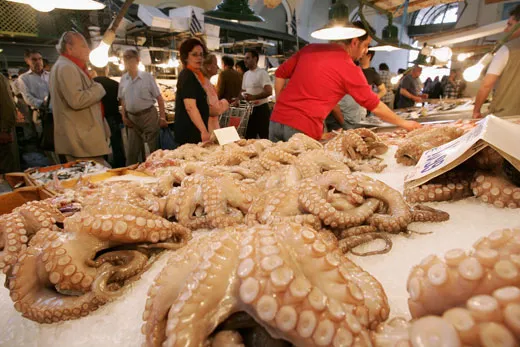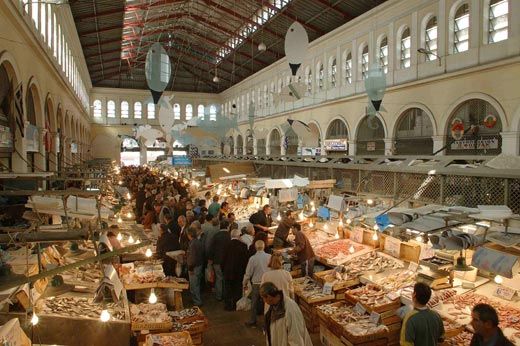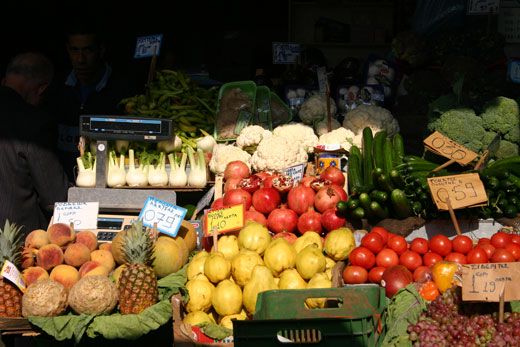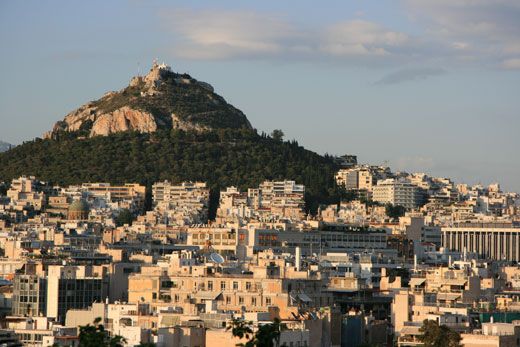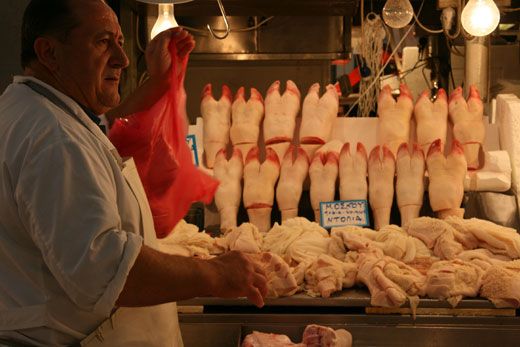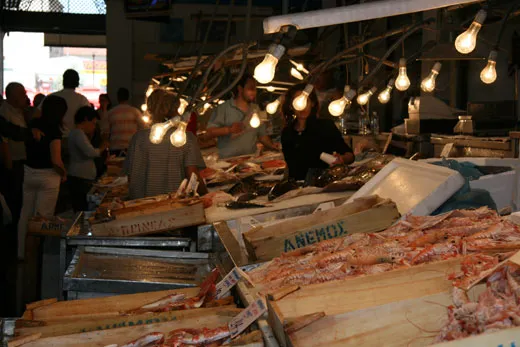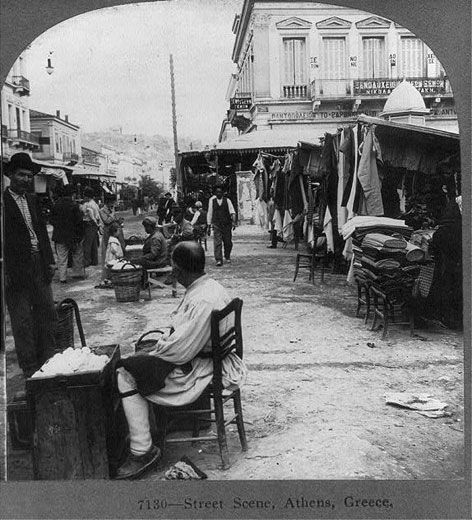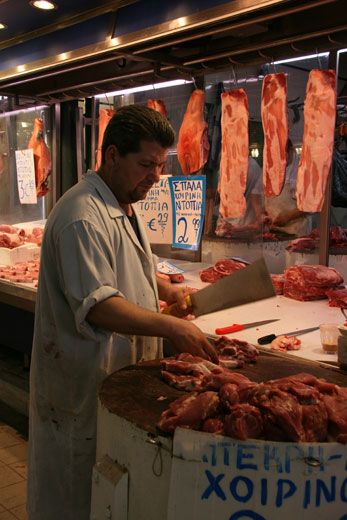Snapshot: Athens Central Market
More than 30,000 people mingle every day at Dimotiki Agora, the city’s busiest markets
/https://tf-cmsv2-smithsonianmag-media.s3.amazonaws.com/filer/athens-main-631.jpg)
Not far from the entrance to the Ancient Agora, once a center of commercial life and a gathering place for such notables as Socrates and Aristotle, stands the Dimotiki Agora. This modern-day Athenian market is filled with a smorgasbord of fruits, vegetables, seafood, cuts of meat, and, like its ancient counterpart, tens of thousands of locals and tourists everyday.
Read about this vibrant Greek market below then click on the main picture to view a photo gallery.
Origins: For hundreds of years, vendors scattered their makeshift stalls in the foothills of Acropolis Hill around the edges of the Ancient Agora (Ancient Market), home to such Greek ruins as the Statue of Hadrian. In 1875, Panagis Kyriakos, the then mayor of Athens, decided it was time to build a thoroughly modern market, one that would satisfy the needs of the city. More than ten years passed before the architect and his workers finished the neoclassical building, which opened to the street outside through several large archways. In 1886, a glass roof completed the construction, making way for a new commercial magnet on Athinas Street in the Monastiraki area of the city.
The appeal: While many visitors focus on the rich history of the nearby Acropolis, they can find the city's present-day vibrancy at the Dimotiki Agora (Municipal Market), also referred to as Nea Agora (New Market) or in English guides as Athens Central Market. The chop of a knife against a butcher's block, the silver sheen of a bushel of eels on ice, the sales call of shrimp! pigs feet! lamb! in Greek over the hum of thousands of quick conversations—distinctive sights and sounds buzz through this Athens market.
Tourists may stroll through the rows of vendors or visit the basement restaurants to experience the pulse of a busy city, but locals undoubtedly come for the groceries. Fruits and vegetables are for sale, but meats and fish are the main products here, and they are on proud display under the glare of hanging light bulbs. Seafood hawkers continually spray their wares—from the smallest shrimp to the longest face of a swordfish—with water to make sure they glisten with freshness. The butchers, in an adjacent building attached by walkways, hang behind glass or from hooks everything from freshly skinned rabbits with only bushy tails intact to the intestines of cows. Goods here satisfy a range of tastes and budgets, with customers traditionally sticking to pork, rabbit and chicken in the summer and lamb and beef in the winter. The market also serves as a snapshot of a larger Athens. Consumers can gauge the market price of traditional Greek foods for holidays and rituals by checking costs here.
Interesting historical facts: Building the market certainly had its problems. The city interrupted construction several times when Mayor Soutsou went to jail for five months following a local court case. Eight years into the project, builders received a surprise incentive to finish. In August 1884, the old market area burned down, and vendors moved into the new central market before it was completed. Nearly two years passed before the final touch—a glass roof—was installed.
Who goes there? Currently some 108 butchers, 150 seafood stands and 80 fruit and vegetable stalls make their home at the Dimotiki Agora. Each merchant has on average five staff. Some of the businesses are family-owned, passed down through the generations, but many employees today have migrated from Albania, Bulgaria, Pakistan and Egypt. Despite the large number of workers at the market, it still feels like a "small society," says a seafood vendor who works with his father. "We are together more than 10 hours every day."
Any given weekday, some 30,000 tourists and locals come to the market to peruse or pick up produce, fish or meats; four times as many come on the weekends. Yet nothing compares to Easter and Christmas when some 300,000 people roam the area for the bulk of their holiday meals. The market "is part of the Athenian lifestyle," says Petros Tsarouchis from the Embassy of Greece. "Rich and poor, everybody goes there."
Then & Now: The market blossomed for many years. Businesses were handed down through the generations, and it was common to find father and son working together. As the popularity of the supermarket increased in the 1980s, the appeal of the market waned, and many members of the new generation lost interest in continuing the family legacy.
Now merchants often hire outside the family. Local residents still come to the market, while other Athenians, including foreign ministers, parliamentarians and former mayors, have found a renewed interest in shopping here. The city gave the market a facelift before the 2004 Olympics, bringing in even more tourists.
